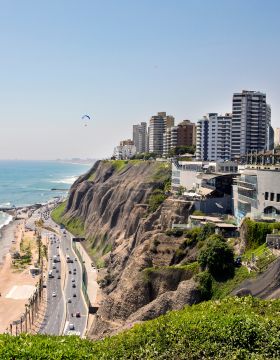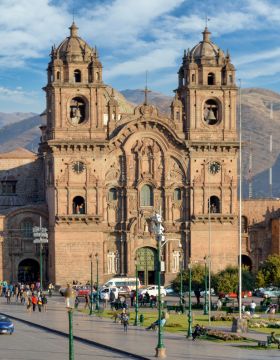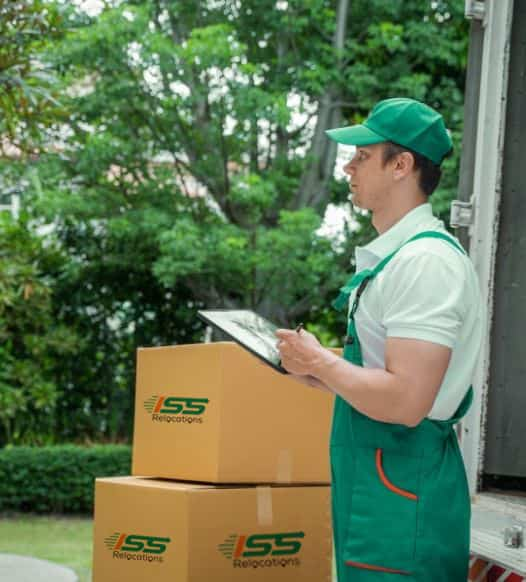Comprehensive Guide for Moving To Peru
Are you planing to move to Peru and wondering about the hassle of taking your belongings with you? Look no further! ISS Relocations is here to help you with our international luggage relocation service. We make it easy and stress-free for you to move your possessions to Peru. With ISS, you can be rest assured that all your belongings and assets will be safely transferred to your preferred location.
Benefits of Moving to Peru:
Peru provides a plethora of advantages for those who decide to move there. The country offers a broad range of natural landscapes and cultural heritage sites that are beautiful to behold. Moving to Peru has numerous benefits:
Get A Free Moving Quote Today
"*" indicates required fields
Affordable Cost of Living:
One of the significant advantages of living in Peru is the low cost of living. Even with a modest budget, Americans moving to Peru can comfortably live in Peru, and your money will go a long way compared to other countries.
Rich Cultural Heritage:
Peru has a rich cultural heritage and a diverse and vibrant culture, along with many ancient ruins and archaeological sites. You can immerse yourself in traditional festivals as well as modern art and music when you visit Peru.
Natural Beauty:
The country boasts stunning natural beauty, from the Andes Mountains to the Amazon rainforest, with countless hiking trails, rivers, and waterfalls to explore.
More Than Movers - We're Your Relocation Partners
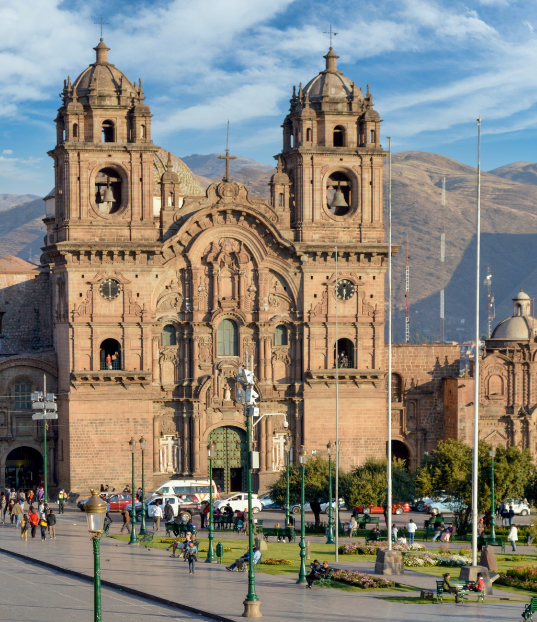
How To Move To Peru
Read along as we provide you with all the essential information about visa requirements, relocation Peru costs, housing expenses, and healthcare services. In addition, we will discuss taxation, education, and the job market in Peru, and recommend the best cities to live in. So, let’s get started!
ISS Relocations offers moving services to and from Peru to:
Dubai, UAE Oman Qatar Bahrain Saudi Arabia Kuwait India
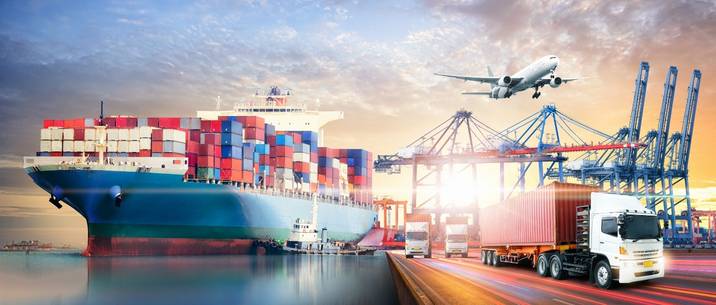
Reliable International Moving to Peru
Trust ISS Relocations for a smooth move to Peru. We manage secure transport, global logistics, and customs clearance—ensuring your belongings arrive safely and on schedule.
Best Cities To Living In Peru
If you are looking for great cities to reside in Peru, there are many options to choose from depending on your personal preferences.
Moving to Lima
As the capital of Peru and the largest city in the country, it has a rich history, a diverse population, and many cultural attractions to offer. People emigrating to Peru usually love the environment of Lima.
Moving to Cusco
The Andes Mountains house the city of Cusco, which is renowned for its historical significance as the capital of the Inca Empire. This city is a famous tourist destination and boasts a rich cultural heritage.
Moving to Arequipa
Located in southern Peru, Arequipa is a city famous for its colonial architecture, scenic beauty, and charming streets.
Moving to Trujillo
The northern city of Trujillo is known for its lively cultural scene, archaeological sites, and museums.
Moving To Peru – Visa’s Requirements
Read along as we provide you with all the essential information about visa requirements, relocation Peru costs, housing expenses, and healthcare services. In addition, we will discuss taxation, education, and the job market in Peru, and recommend the best cities to live in. So, let’s get started!
Moving to Peru – Visa Requirements
Here is some general information about the visa requirements for Peru:
- Tourist Visa: To stay in Peru for up to 183 days for tourism purposes, Americans moving to Peru can obtain a tourist visa upon arrival at the airport or border crossing. This visa is free and will remain valid for up to 183 days.
- Business Visa: If you plan to visit Peru for business purposes, you may require a business visa. The requirements for a business visa will vary based on your purpose of travel, but usually, you will need to provide a letter of invitation from a Peruvian company or organization, proof of financial solvency, and a passport valid for at least six months.
- Work Visa: To work in Peru, you must obtain a work visa, which varies depending on the nature of your job and the duration of your stay. You must typically provide proof of employment or a job offer from a Peruvian company, a valid passport, and a police certificate.
- Student Visa: If you plan to study in Peru, you must obtain a student visa, which requires proof of enrollment in a Peruvian educational institution, a valid passport, and evidence of financial support.
Cost Of Moving To Peru
Before deciding to move to Peru, it is crucial to consider the expenses that come with the relocation. The cost of moving to Peru depends on several factors such as your country of origin, mode of transportation, household size, and the type of housing you opt for.
Moving from nearby countries such as Bolivia or Ecuador may incur a lower transportation cost. However, if you’re moving from Europe or North America, the cost of transportation could be quite high. Moreover, if you plan on taking a lot of personal belongings with you, it’s necessary to include the cost of shipping or hiring a moving company.
When you reach Peru, your cost of living can differ based on your lifestyle and where you choose to live. Lima, the capital city, is generally pricier than other areas of the country. If you intend to rent an apartment or a house, the expense will be influenced by the property’s location and size.
Additionally, visa fees, healthcare expenses, and transportation costs inside the country are among the other factors to consider while determining the cost of relocating to Peru. It’s necessary to conduct comprehensive research and budget accurately to ensure a seamless move to your new residence in Peru.
Here is a table that will help you understand the cost of your relocation to Peru.
| Expense | Cost |
| Shipping and Customs fees | $500 |
| Housing (rental deposit, first month’s rent) | $1,000 |
| Utilities (electricity, water, internet) | $200 |
| Food and entertainment | $500 |
| Miscellaneous expenses | $250 |
| Visa fees | $150 |
| Airfare | $800 |
Housing In Peru
In Peru, housing presents a multifaceted challenge due to substantial inequalities in terms of availability and quality throughout the country. Urban areas such as Lima have experienced a surge in the construction of modern, tall apartment buildings, whereas several rural and low-income regions are still struggling to access fundamental housing facilities.
To tackle these imbalances, the government of Peru has introduced various policies aimed at providing affordable housing loans and grants to low-income families. Nevertheless, progress has been hampered in many cases by corruption and administrative inefficiencies. The following table outlines the cost breakdown of all expenses associated with housing in Peru.
| Housing Expense | Average Cost Per Month |
| Rent (1 bedroom apartment in the city center) | 1,400 PEN (approx. 368 USD) |
| Utilities (electricity, water, gas) | 300 PEN (approx. 79 USD) |
| Groceries | 1,000 PEN (approx. 263 USD) |
| Internet and Cable TV | 180 PEN (approx. 47 USD) |
| Transportation (monthly pass) | 100 PEN (approx. 26 USD) |
Kindly take note that the expenses mentioned are typical estimates and subject to change depending on the locality and standard of the accommodation. Moreover, these expenditures could be more or less, depending on personal choices and preferences.
HealthCare System In Peru
Peru has a healthcare system that comprises both public and private healthcare systems. The Ministry of Health administers the public healthcare system, which offers free healthcare to all Peruvians, regardless of their financial status. Nonetheless, the quality of healthcare provided by the public healthcare system is generally inferior to that of the private healthcare system.
On the other hand, the private healthcare system in Peru is usually of better quality and has a broader range of services than the public system. Nevertheless, the cost of private healthcare can be high, making it inaccessible to some individuals.
Taxation In Peru
In Peru, the tax system follows a progressive income tax system, which considers individual income levels to determine tax rates. Depending on the income bracket, tax rates range from 8% to 30%. Besides, there is an 18% value-added tax (VAT) imposed on most goods and services, except for essential items such as food and medicine.
The government of Peru uses the taxes collected to finance various public services such as healthcare, education, and infrastructure development. Taxpayers must file their tax returns annually, and failure to comply may result in penalties and fines. The Peruvian tax system intends to foster economic growth and development while ensuring taxpayers pay their fair share.
Education System In Peru
Education in Peru is an important part of the country’s social and economic development. Peru’s social and economic development heavily relies on education. However, despite being mandatory, many children living in remote or rural areas cannot obtain an education due to poverty and lack of infrastructure.
To address the issue, the government has initiated reforms to enhance education quality, including better training for teachers and increasing funding. As a result, tertiary education has become more crucial in Peru, with many students seeking opportunities to advance their job prospects.
Nonetheless, higher education access is often limited by steep tuition fees and insufficient scholarships. Thus, education in Peru remains a crucial area that requires investment and improvement.
Work Market In Peru
Peru has a diverse and extensive workforce with abundant opportunities in different sectors. The mining, agriculture, and manufacturing industries are crucial to the country’s economy, providing jobs for a significant percentage of the population. The tourism industry has also grown significantly in recent years, providing employment opportunities in various areas such as hospitality, transportation, and entertainment.
The government determines the minimum wage in Peru, which varies by location and industry. Although the minimum wage provides a basic standard of living, many workers earn higher salaries based on their qualifications and experience. Moreover, a significant percentage of the population works in the informal economy, where wages may not be regulated but can be higher than the minimum wage.
Moving To Peru? Start Your Stress-Free Move Now!

FAQs – Moving to Peru
How much does it cost of moving to Peru from UAE?
The cost of moving to Peru from the UAE depends on factors like the amount of belongings, shipping method, and distance. On average, moving costs can range from AED 10,000 to AED 20,000 or more for a standard 1-2 bedroom household. ISS Relocations offers comprehensive moving services, including packing, customs clearance, and shipping, tailored to your budget, ensuring a smooth and affordable relocation experience to Peru.
Can I move to Peru from UAE?
Yes, moving to Peru from the UAE is possible by applying for a visa, typically a tourist or residence visa, depending on your circumstances. The process involves gathering the necessary documents and meeting the requirements set by the Peruvian government. ISS Relocations offers expert support for navigating visa applications, managing the logistics of your move, and helping you settle in Peru, ensuring a hassle-free transition.
Is Peru a good place for moving from UAE?
Peru offers a rich cultural heritage, beautiful landscapes, and affordable living costs. It’s an ideal destination for those seeking adventure and a slower pace of life. However, the infrastructure and healthcare may not match Western standards. ISS Relocations provides relocation services to help you settle in Peru, offering assistance with finding housing, navigating local systems, and ensuring a smooth transition.
How much money do you need for moving to Peru from UAE?
The amount needed for moving to Peru depends on your lifestyle, but you can expect to spend around $1,000 to $1,500 per month in major cities like Lima. You should also factor in the initial costs of setting up your life, including housing, transportation, and immigration fees. ISS Relocations can help you budget effectively and prepare for your move with personalized services.
How does ISS Relocations work?
At ISS Relocations, we ensure the safety of your personal belongings during their transportation to your new destination. We provide coverage that protects your possessions against loss, theft, and damage. You have the flexibility to choose the coverage level that aligns with your specific needs and budget.
Can ISS Relocations help me with customs fees?
At ISS Relocations, we are unable to cover any customs fees. However, we are dedicated to supporting you throughout the customs process and can offer guidance on ways to minimize any potential fees.
How can I use the services provided by ISS Relocations for my moving to Peru?
If you are planning for moving to Peru, utilizing our services at ISS Relocations is simple. All you need to do is reach out to us and we will assist you in selecting the most suitable coverage level for your needs.
Can I immigrate to Peru from UAE?
Yes, you can immigrate to Peru with the appropriate visa, such as a work, student, or family reunion visa. The process is straightforward, but you’ll need to meet the necessary requirements. ISS Relocations offers expert assistance with immigration paperwork, ensuring that your relocation to Peru is seamless and well-managed.
How to live permanently in Peru?
To live permanently in Peru, you must apply for permanent residency through the appropriate visa category, such as a work visa or family-based visa. After a certain period of residency, you can apply for citizenship. ISS Relocations can guide you through the legal requirements, assist with the visa application process, and provide relocation support to ensure a smooth transition to life in Peru.
